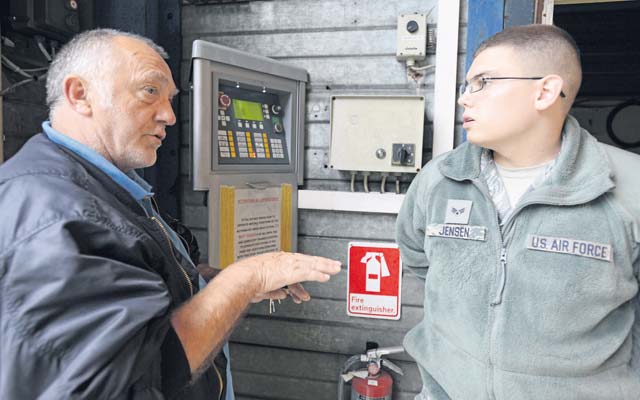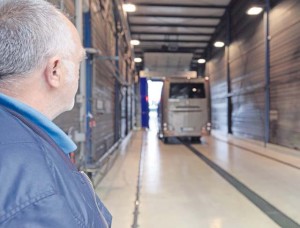
According to Air Force Instruction 1-1, Air Force Standards: “Employees shall protect and conserve federal property.” That can mean being a steward of resources that range from taking care of the gear they were issued to helping maintain of a facility to ensuring a vehicle is clean.
Operators of government motor vehicles are charged with that task. Taking care of GMVs doesn’t have to be a daunting task as they have the wash rack on Ramstein to help.
Maintained by the 86th Vehicle Readiness Squadron, the wash rack is used to clean GMVs such as security forces cruisers, commanders’ vehicles and even buses that transport distinguished visitors or aircrews.

“It’s important to maintain the wash rack because we are the main facility on base that washes all of the (government) vehicles,” said Staff Sgt. Matthew Hatch, 86th VRS NCO in charge of equipment support. “Other units from the (KMC) area come here to wash their vehicles.”
Regularly washing vehicles can reduce the normal wear and tear on vehicles caused by weather, as well as help sustain safe driving conditions. Units are required to wash their GMVs at least every 15 days, and with approximately 1,800 vehicles in the fleet that can use it, maintaining and properly operating the wash rack is not to be taken lightly.
“It’s important that the wash rack is taken seriously,” Hatch said. “If they don’t know how to properly run it, they will end up breaking parts on the machine or on the vehicles. Let’s say we send a bus through, and they breakthe mirror off the bus. That’s a vehicle that we can’t use; a vehicle that can’t go there and support the mission.”
Able to fit anything from sedans to large buses, one of the beneficial aspects of the wash rack is that it reduces the time for washing.
“We can fit 44-passenger buses in there,” Hatch said. “Normally, if we were to wash that by hand it takes about 20 to 30 minutes.”
With the wash rack system, Hatch says they cut that time down to about six or seven minutes. That drastic cut in time not only allows the vehicles to get back on the road faster, but it also enables Airmen to focus more on other tasks.
On top of saving time, the wash rack also does its part to manage the water resources.
“Our system uses 30 percent recycled water to 70 percent fresh water,” Hatch said. “We help keep the water running through it so we aren’t wasting our water supply.”
So whether it is managing the water supply, Airmen’s time or just keeping a GMV clean, the wash rack is a valuable resource in the KMC’s stewardship.


